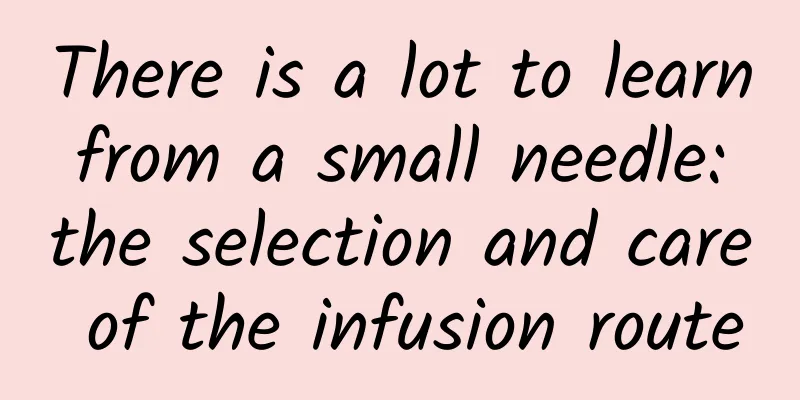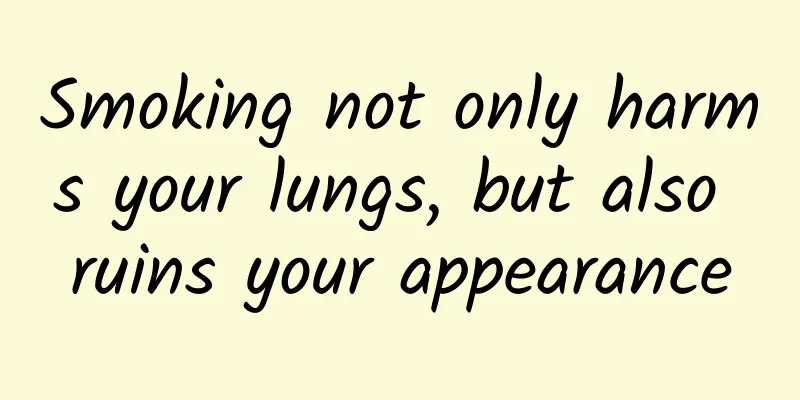There is a lot to learn from a small needle: the selection and care of the infusion route

|
Author: Yu Xiaoli, The Fifth Medical Center, PLA General Hospital Reviewer: Jin Bo, Chief Physician, Fifth Medical Center, PLA General Hospital Intravenous infusion is a commonly used treatment method in clinical practice. However, many critically ill patients have poor vascular conditions. Nurses will select an infusion route suitable for their treatment based on the patient's local vascular conditions, length of treatment, nature of the drug, condition, age, and other factors such as the patient's comfort, economic status, and intentions. This ensures infusion safety while meeting treatment needs and minimizes venous damage caused by improper infusion routes. So, how should we choose infusion routes for different patients? What are the daily maintenance precautions for different infusion routes? In order to better maintain the health of patients, patients and their families should understand this. 1. Ordinary steel needle Ordinary steel needles are relatively sharp steel needles and are currently not recommended for use in patients with poor vascular conditions. Figure 1 Copyright image, no permission to reprint 1. Scope of application: short-term (infusion time less than 4 hours) single intravenous infusion treatment. 2. Advantages: simple operation and easy to use. 3. Notes: (1) Reduce the activity of the arm on the infusion side to avoid fluid leakage or extravasation, which may lead to local tissue and skin swelling, skin damage or even necrosis. (2) After the needle is removed, the needle should be cut off and placed in a sharps container to avoid needle stick injuries caused by the needle being exposed, which increases the chance of infection. 2. Intravenous Catheter The intravenous catheter is a soft needle made of polyurethane, with the characteristics of a long needle head and a large needle diameter. Figure 2 Copyright image, no permission to reprint 1. Scope of application: It is recommended to use intravenous catheters for short-term treatment, intermittent or continuous infusion therapy. 2. Advantages: (1) The operation is simple and can reduce the pain caused by repeated puncture. (2) Patients can move more easily and their comfort level during infusion is improved. (3) The incidence of needlestick injuries is reduced. (4) The recommended retention time for the catheter is 72 to 96 hours (depending on the specific situation). 3. Notes: (1) During and after intravenous infusion, patients can exercise appropriately, but avoid strenuous exercise such as playing ball, lifting heavy objects, etc. (2) After the infusion is completed, the nurse will flush the remaining drugs in the catheter with 0.9% sodium chloride solution and apply positive pressure to seal the catheter to ensure that there is no blood in the catheter. However, when the patient's arm on the catheter side moves vigorously, there may be a small amount of blood in the extension tube. The patient needs to raise his arm so that the extension tube is higher than the puncture point and notify the nurse in time. (3) When washing your hands, avoid soaking the area covered by the film and the catheter in water. If you need to take a shower, you can wrap a layer of plastic wrap around the intravenous needle to prevent water from entering. 3. Peripherally inserted central venous catheter A peripherally inserted central venous catheter (PICC) is a soft, flexible silicone tube that is operated by professional medical staff. The catheter is placed directly into the superior vena cava to provide patients with medium- and long-term venous treatment access. Figure 3 Copyright image, no permission to reprint 1. Scope of application: (1) Medium- to long-term intravenous infusion is required (5 days to 1 year). (2) Patients with poor peripheral vascular conditions. (3) It can be used for the infusion of drugs of any nature, such as the infusion of corrosive, hypertonic, irritating or viscous liquids, such as energy mixtures, potassium-containing drugs, chemotherapy drugs, etc. (4) Special patients: upper gastrointestinal bleeding, massive ascites, hypokalemia, liver failure, hyperbilirubinemia, endoscopic treatment, etc. 2. Advantages: (1) Reduce the pain and difficulty of repeated venipuncture and improve patient comfort. (2) To protect blood vessels, corrosive, irritating, and hypertonic fluids can be injected to prevent skin damage or necrosis caused by fluid extravasation. (3) The indwelling time is long. The specific indwelling time depends on the comprehensive evaluation of the catheter, and it is advisable that the maximum indwelling time does not exceed 1 year. (4) Catheterization has low risk and infection rate. (5) It does not affect the patient’s basic daily life and allows for easy activities. 3. Notes: (1) Can do general housework, such as sweeping the floor, cooking, and washing dishes. (2) You can take a shower, but avoid swimming, taking a tub bath, or soaking in a hot tub. When showering, use a waterproof sleeve to protect the catheter. You can also use plastic wrap to wrap the catheter site 2 to 3 times as a temporary "sleeve", ensuring that the puncture point and catheter connector are wrapped 3 to 5 cm away from the edge of the "sleeve". Secure the two ends of the "sleeve" with tape, and raise the arm on the catheter side when showering, but do not raise it above your head. (3) Appropriately perform gentle movements such as clenching a fist and stretching the arm on the catheter side to increase blood circulation and prevent complications. However, care should be taken to avoid excessive arm exertion, such as playing ball, lifting objects weighing more than 5 kg or holding a child, using crutches, lifting dumbbells, or using the arm to support getting out of bed. (4) Pay attention to protecting the exposed infusion connector to prevent the catheter from being damaged or slipping off. The cuffs of the clothes should not be too tight. Do not hook or pull out the catheter when changing clothes; when dressing, put on the sleeve on the side where the catheter is placed first, then the sleeve on the opposite side; when undressing, take off the sleeve on the opposite side first, then the sleeve on the side where the catheter is placed. (5) Avoid applying a tourniquet, measuring blood pressure, or performing venipuncture on the arm where the catheter is placed. (6) When the following situations occur, the patient must inform the nurse in time for treatment: bleeding or exudation at the catheter puncture site; the film is contaminated (or suspected of being contaminated), damp, lifted, damaged or detached; redness, swelling or pain occurs on the limb where the catheter is placed; rashes, blisters, erosions or tears appear on the skin of the limb where the catheter is placed; if the catheter is found to be dislodged or broken. The "three do's and three don'ts" after peripherally inserted a central venous catheter are shown in the figure below. That is, it is good to sweep the floor, eat, and shower, but it is not good to play ball, take a bath, or lift heavy objects. Figure 4 Copyright image, no permission to reprint |
<<: Whooping cough is not to be feared, it is preventable, controllable and treatable!
>>: Dangerous brain tumor - How much do you know about glioma?
Recommend
What causes non-menstrual bleeding?
It is a normal physiological phenomenon for women...
40 weeks pregnant back pain
The pregnancy has reached 40 weeks, which means t...
Twin sisters always fall down when walking, it turns out they have congenital cataracts
During the physical examination at the kindergart...
Sometimes I shiver after peeing. Some people say it is kidney deficiency. Do I need treatment?
Sometimes I shiver after peeing. Some people say ...
Women with lower back pain
The waist and abdomen of both men and women are e...
How can breast hyperplasia be diagnosed?
Nowadays, due to various reasons, the number of w...
Why do girls grow chest hair?
Chest hair generally grows on men due to the exce...
Are daylilies and daylilies the same thing? What are the benefits of eating daylilies?
Daylily is a popular ornamental flower in many ga...
How much does KFC's durian stuffed wings cost? Are KFC's durian stuffed wings delicious? How does it taste?
We all know that KFC is a popular fast food resta...
Treatment of postpartum endometriosis
In our daily lives, many women suffer from gyneco...
What to do if the baby has not entered the pelvis at 39 weeks
In the later stages of pregnancy, the fetus will ...
Causes of ovarian cysts in women
When it comes to female ovarian cysts, most peopl...
What to do if women have lower body obesity
In life, there are many female friends who are th...
Abdominal pain after fallopian tube closure
Radiography is another way to check for blocked f...
What is the cause of the yellow-green, sticky, odorless vaginal discharge?
We all know that leucorrhea is a kind of vaginal ...









